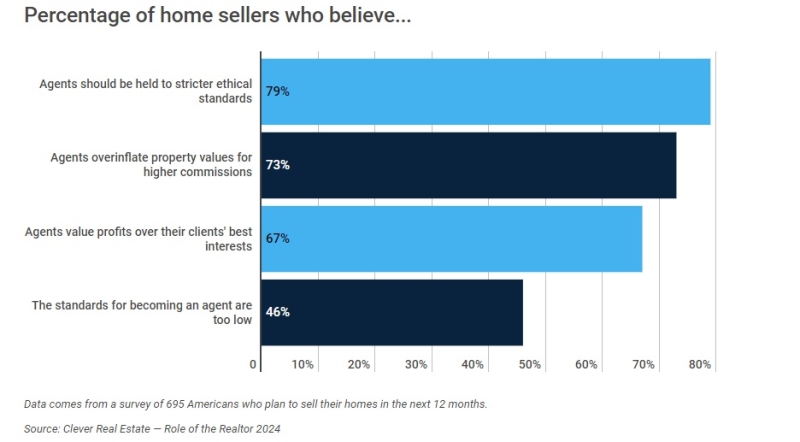Advertisement
A message from the NAMB/WEST Advisory Committee: You asked for it … and we have responded!
How a bank evaluates and tracks the risks in a commercial development loanPhillip Loveloan loss reserve account, classifications of the risk scale
As a bank vice president of commercial lending, I know that each
time we do a loan as a bank, we are required to set a certain
amount of money aside in a loan loss reserve account in case that
loan goes bad. These funds reduce the capital ability of the bank
to lend out more funds and do not earn the bank any money.
Typically, the bank will assess a risk grade for the property based
on a scale. Each bank is different in the number and definition of
the classifications of the risk scale, and the more categories you
have, the more sophisticated the risk scale is. We have recently
gone from a 10 category scale to one that has up to 168 various
categories. Each category carries a certain allocation into the
loan loss, usually from 0.0001 percent to 50 percent.
No matter how varied the risk grading system, there are several
categories that are defined by regulators and have been the same
since the 1930s. "Pass" is a grade for all credits that are OK. The
problem credits get assigned a grade such as "watch,"
"substandard," "special mention," "doubtful" or "loss." Each of
these categories requires a higher allocation into the loan loss
reserve than a pass credit. This higher allocation can turn a
profitable loan into an unprofitable one, since it has increased
the cost the bank has on that loan. Think of it as increasing the
cost of insurance on someone who has a bad driving record. Some of
these categories force the bank to place the loan on non-accrual,
which means we cannot count the interest earned in our income until
we actually receive it.
If the bank does not have certain covenants or provisions in its
note and loan agreements that allow for increases in the interest
rates upon certain loan covenant defaults, then their loan can turn
from profitable to unprofitable overnight.
The risk grades are supposed to be established when the loan is
booked and are supposed to be reviewed and altered if necessary
during the history of a loan. It is best if the bank identifies its
own risk and makes adjustments on its own. The next worse thing is
if the bank's internal auditors make the adjustment, and the worst
is if the regulators force them to make the adjustment. If too many
loans are adjusted down by the regulators, then that bank is viewed
as failing to adequately assess the risk in its portfolio. It is
then that you get the Memorandum of Understandings (MOU) and Cease
and Desist (C&D), and if it is bad enough, the bank is taken
over by the regulators. An MOU places very serious requirements on
a bank for it to change its practices or the bank will be placed
under tougher sanctions. C&D will make a bank unable to do any
new loans until the problems are corrected.
The issue in banking is generally that the line lenders are
often in an environment where they either don't know when the risk
has increased on a loan or they don't want to sound the alarm, as
it will affect them—make them look stupid or maybe even
affect their bonuses. The bank presidents don't want to sound the
alarm since it decreases earnings and restricts the ability of the
bank to lend to other profitable customers. So oftentimes this
"bury your head in the sand" attitude is prevalent, and that is
when you often see surprise announcements of serious losses that
suddenly appear. Most banks also seem to have a culture of shooting
the messenger with the bad news. We think we may see some community
banks fail because of bad subdivision lending.
The challenge is: How do you get a lender interested in a deal
and have it structured in such as way that it will be a "pass"
credit for them? How can you strike a balance between what is
appealing to the bank and what is appealing to the borrower?
Otherwise, you will face a lot of turndowns from both sides.
Here are some things we have done to deal with subdivisions that
have not had sufficient sales and have not maintained their credit
quality. These may be some discussions you have with the new
lenders and with the borrowers:
•Reload the interest carry account. Set-up an account that
will hold any interest that is due on the subdivision for the term
of the loan. This is sometimes done in the loan by using a current
or projected future rate and may either be built into the loan or
placed on deposit at the bank. Usually, this will be done for the
term of the loan. Most development loans go one to three years in
term.
•Make the loan "guarantor reliant." This may be possible
here with the strength of the borrower. The bank would look to him
as their first source of repayment instead of their secondary one.
Thus, the risk grading on the credit is based on the performance of
the borrower and not the subdivision.
•Add additional collateral to the note. Perhaps the borrower
could add some other real estate (not another subdivision, but
income producing property as collateral) to reduce the exposure to
the bank, if a client has strong equity positions in a lot of his
real estate.
•Set-up required curtailments of principal in the loan. This
can be done on an annual or quarterly basis. Some options may be to
do five percent or 10 percent, or if the appraisal estimates that
45 lots sell in a year, then the principal reduction of 45 lots.
This can come from lot sales or out of the borrower's pockets.
If a project has problems, another thing that may help is to
fire the real estate agent team, if they are not performing, and
replace them with one or two others that can specialize in your
type of subdivision. Also, sales contracts and pre-sales do not
help here unless they have some substantial earnest money
provisions that are hard. We have seen national builders walk away
from hard money options, as they believe they can pick up the same
land at a 50 percent discount within a couple of years. If they
have five percent hard money into the option, they end up paying 55
percent of the price today.
If you have a lender that offers to take over an
under-performing property and does not require any of the above,
take it and run. But some of the above may increase your chances of
placing a loan from slim to probable as challenges in the
marketplace continue to exist. You need to convince the borrower
that their bank is not a partner in a project; the bank is a lender
who has the greatest stake financially in a deal. With limited or
no sales and no principal reduction, there will come a time when
the bank will force the borrower's hand and require things that are
very uncomfortable for the borrower.
Phillip Love may be reached at (480) 836-8681.
About the author





